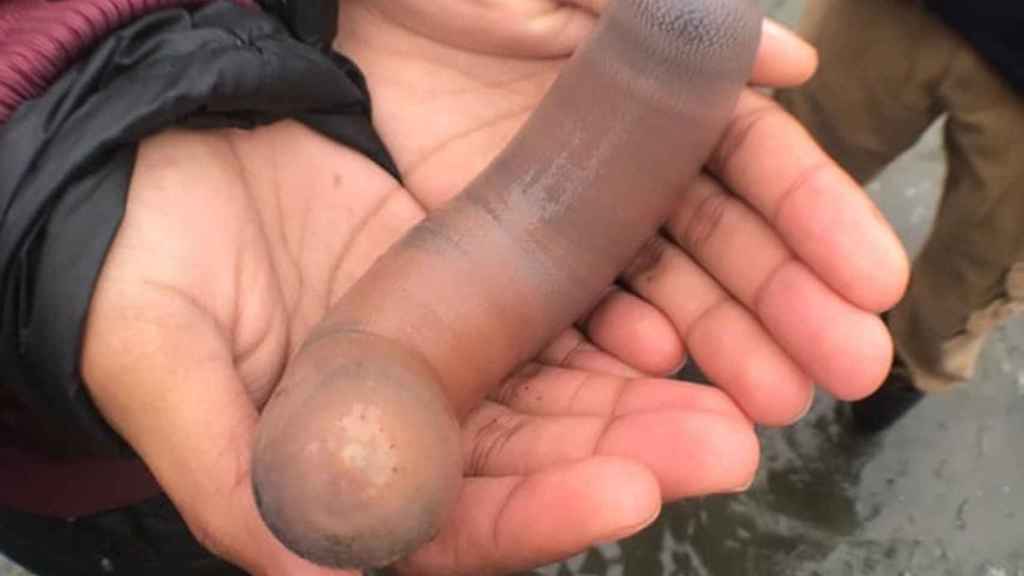
Una persona sostiene un pez pene en la playa de Drakes (California) / KATE MONTANA / INATURALIST
Miles de 'peces pene' invaden una playa de California
Esta especie marina apareció en la playa de Drakes después de un fuerte temporal en la zona
14 diciembre, 2019 21:36Noticias relacionadas
Miles de criaturas marinas, conocidas popularmente como peces pene, invadieron la semana pasada la playa Drakes de la Bahía norte de California (Estados Unidos) tras producirse una tormenta en la zona. Los vecinos del lugar se han visto sorprendidos por una estampa nada habitual en el continente americano.
La orilla de la costa estaba completamente invadida por esta especie marina con forma de falo, y que alcanza hasta los 25 centímetros de longitud y de un grosor considerable. Conocido como pez pene, científicamente se le conoce como Urechis caupo.
"NO TENÍA NI IDEA DE LO QUE PODRÍAN SER"
Se alimentan de plancton y bacterias que cazan con una sustancia mucosa y pegajosa emitida por su anillo de glándulas. Aunque se trate de una especie totalmente desconocida en España --salvo para los pescadores, que lo utilizan como cebo--, en algunos países asiáticos como Corea es habitual comer este pez.
La invasión en la costa californiana ha llamado la atención de los medios estadounidenses y de los internautas, que han inmortalizado el momento a través de sus cámaras para luego colgarlo en las redes sociales. David Ford, un vecino de la bahía de California, relató a la revista Vice la estampa que se encontró en la playa de Drakes el pasado 6 de diciembre, cuando salió a pasear como hace de costumbre: "No tenía ni idea de lo que podrían ser. Avacé durante dos kilómetros. Caminé durante otra media hora y estaban dispersos por todas partes. Había gaviotas alineadas en la playa... habían comido tanto que apenas podían moverse".
Thousands of penis fish washed up on a Point Reyes beach. Yes, really. https://t.co/wH53tDLpM0 pic.twitter.com/iCfW1kgSGX
— SFGate (@SFGate) December 12, 2019





